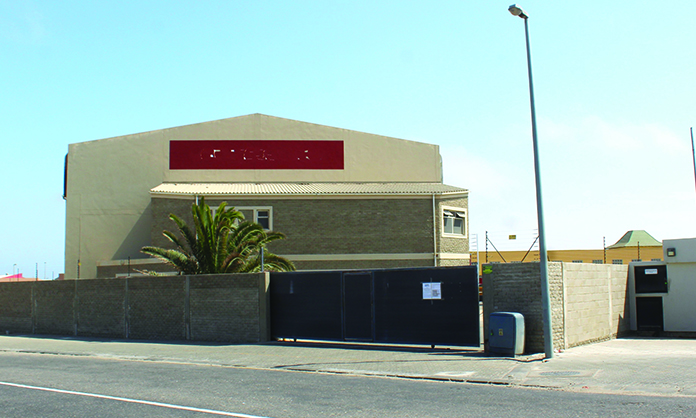Swakopmund residents and environmental activists are against a private company that plans to establish a hazardous industrial storage facility for radioactive materials.
Namaquanum Investments Two has an existing workshop on erf 3954 Einstein Street at the town.
In the background information document by Geo Pollution Technologie, the company states it intends to refurbish the workshop and construct a dedicated storage facility for radioactive source material used to calibrate and test drilling equipment (well logging equipment) used in the offshore oil exploration industry.
Clients from the offshore exploration industry will utilise the workshop and source materials from there to perform the necessary calibrations and tests on their drilling equipment.
Namaquanum has requested Geo Pollution Technologies to apply for an environmental clearance certificate (ECC) for the proposed facilities and operations.
The ECC is required as per the Environmental Management Act to put out a public notice regarding its intention.
As part of the process, a notice was published in the newspapers to give people a chance to object by 8 March.
The proposal is already facing significant backlash from the local community, raising alarm over potential health and environmental risks.
An online petition was launched on Sunday, which has already garnered support from over 1 000 signatories. The petition emphasises the risks associated with handling and storing radioactive materials, including cancer and genetic damage, as highlighted by the World Health Organisation.
“This project poses significant health and environmental risks to our community. We urge the relevant authorities to prioritise public safety over industrial interests,” says Louise Engelbrecht, who initiated the petition.
The sentiment is echoed by Jens Schneider of the Conservation Film Foundation Namibia, who drafted a template letter for objections to the project.
Schneider’s letter, addressed to Swakopmund’s chief executive Alfeus Benjamin and steward planning representatives (who are representing Namaquanum), outlines the detrimental impact the facility could have on Swakopmund’s tourism industry, public safety and environmental integrity.
“The presence of a nuclear storage facility could irreparably harm Swakopmund’s image and competitiveness in the tourism market,” he warned.
Supporters of the petition have voiced their concerns, highlighting the lack of an environmental impact study and the irreversible damage that could result from radioactive pollution.
Residents Tammy Hough and Charlotte Kooiman have criticised the plan for its potential to harm humans, animals and the natural beauty of Namibia.
“Let’s not just keep Swakopmund, but the whole of Namibia clean from radioactive pollution,” Kooiman urged.
The controversy has also sparked calls for the release of a background information document detailing the storage unit’s plans.
Historical references to a similar scheme proposed shortly after Namibia’s independence have raised suspicions and concerns about the motivations behind the current project.
In response to the community opposition, Benjamin acknowledged the public’s concerns but stressed the importance of formal objection procedures.
“I know people are objecting on Facebook and doing all these things, but they must do so in writing. And post it to our offices,” he said.
He added that the decision-making process is ongoing and any actions would only follow a comprehensive review of written objections and subsequent approval by the environmental commissioner.
Johan Otto of Steward Planning says from the onset they shared the community’s concerns about introducing such a facility within the town.
“However, after thorough discussions and feasibility studies, it became clear that the project’s intentions are vastly different from public perception. It’s not about bringing nuclear waste into the community, but about supporting the oil exploration industry with essential services,” he says.
“The substances in question are used in very small quantities, solely for calibrating and testing drilling equipment. This is a critical need as oil exploration activities gain momentum, especially in regions like Namibia.”
Otto addressed what he termed misinformation spread through social media, emphasising that the narrative that the company is trying to establish a nuclear waste facility is false.
“The developer is deeply committed to adhering to international standards for safety and environmental protection,” Otto says.
“Without a facility that meets these rigorous standards, we risk having companies undertake such activities illegally, potentially compromising safety.”
Steward Planning and the developer are proactively addressing public concerns by preparing a comprehensive media statement.
Otto promised ongoing communication and transparency, stating that Namaquanum will be issuing a Q&A to the media soon.
“We’re in the process of finalising the answers to the community’s questions and we’ll be sharing these insights as soon as they’re available. Our aim is to ensure that the public is fully informed and that any decisions made are in the best interest of the community’s safety and environmental well-being.”
Stay informed with The Namibian – your source for credible journalism. Get in-depth reporting and opinions for
only N$85 a month. Invest in journalism, invest in democracy –
Subscribe Now!






